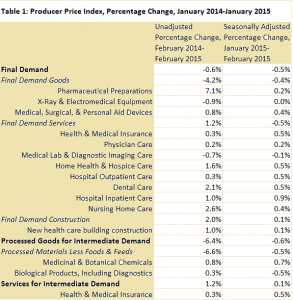Health Spending Up, Up, and Away
The Quarterly Services Survey (QSS) is Census Bureau report that we should be watching to see how health costs are climbing. This blog last looked at it in September 2014. Fortunately, Dr. Drew Altman, CEO of the Kaiser Family Foundation has been keeping a close eye on it. His conclusion:
New Evidence Health Spending Growing Faster Again
Analysis of the survey data shows that health spending was 7.3% higher in the first quarter of 2015 than in the first quarter of last year. Hospital spending increased 9.2%. Greater use of health services as well as more people covered by the ACA appear to be responsible for most of the increase. People are beginning to use more physician and outpatient services again as the economy improves. The number of days people spent in hospitals also rose. (Drew Altman, “New Evidence Health Spending Growing Faster Again,” Wall Street Journal, June 11, 2015)
The growth in number of days spent in hospital is very disconcerting. It had been on a downward trend for years. (See page 300 of this CDC report.)




